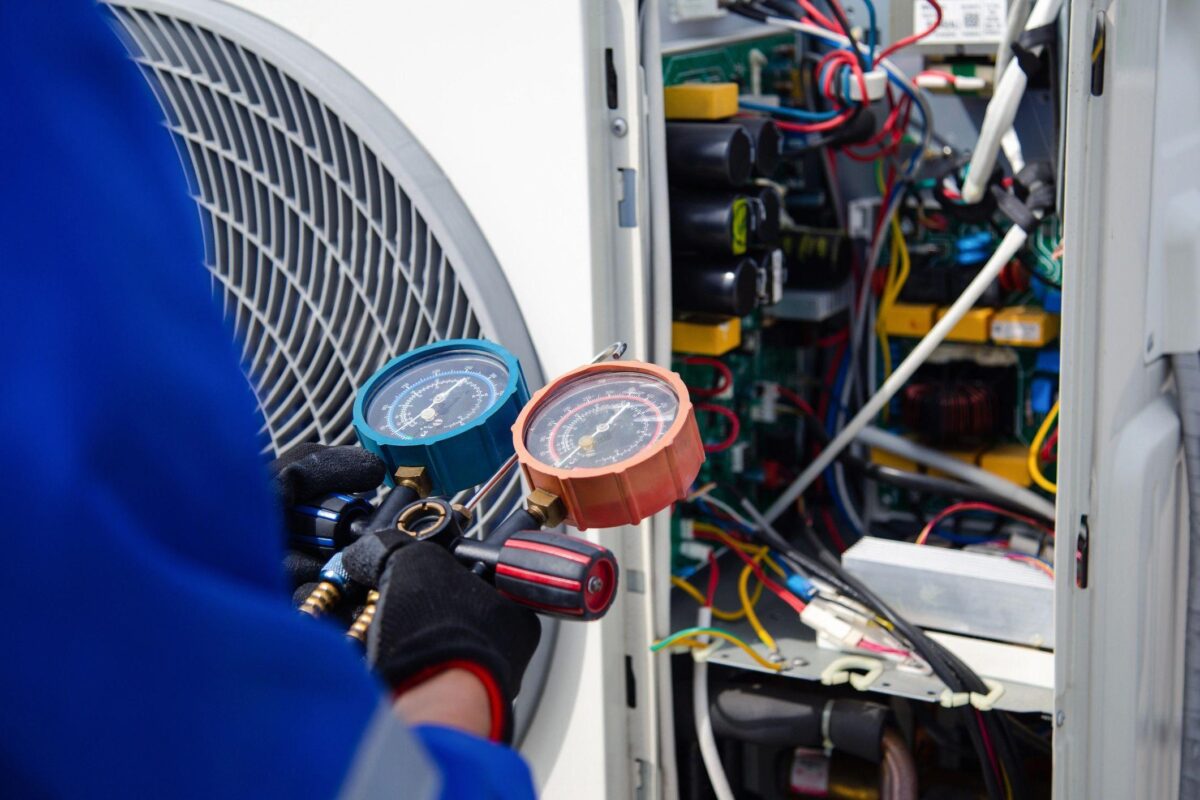When your air conditioner fails in Phoenix’s scorching heat, where temperatures regularly exceed 110°F during summer months, finding reliable AC repair isn’t just a convenienceit’s an emergency. With over 300 days of sunshine annually and summer temperatures that can literally fry an egg on the sidewalk, Phoenix homeowners understand that a functioning air conditioning system is essential for survival, not luxury. This comprehensive guide will help you navigate the Phoenix air conditioner repair landscape, identify the best service providers, and make informed decisions when your cooling system needs professional attention.
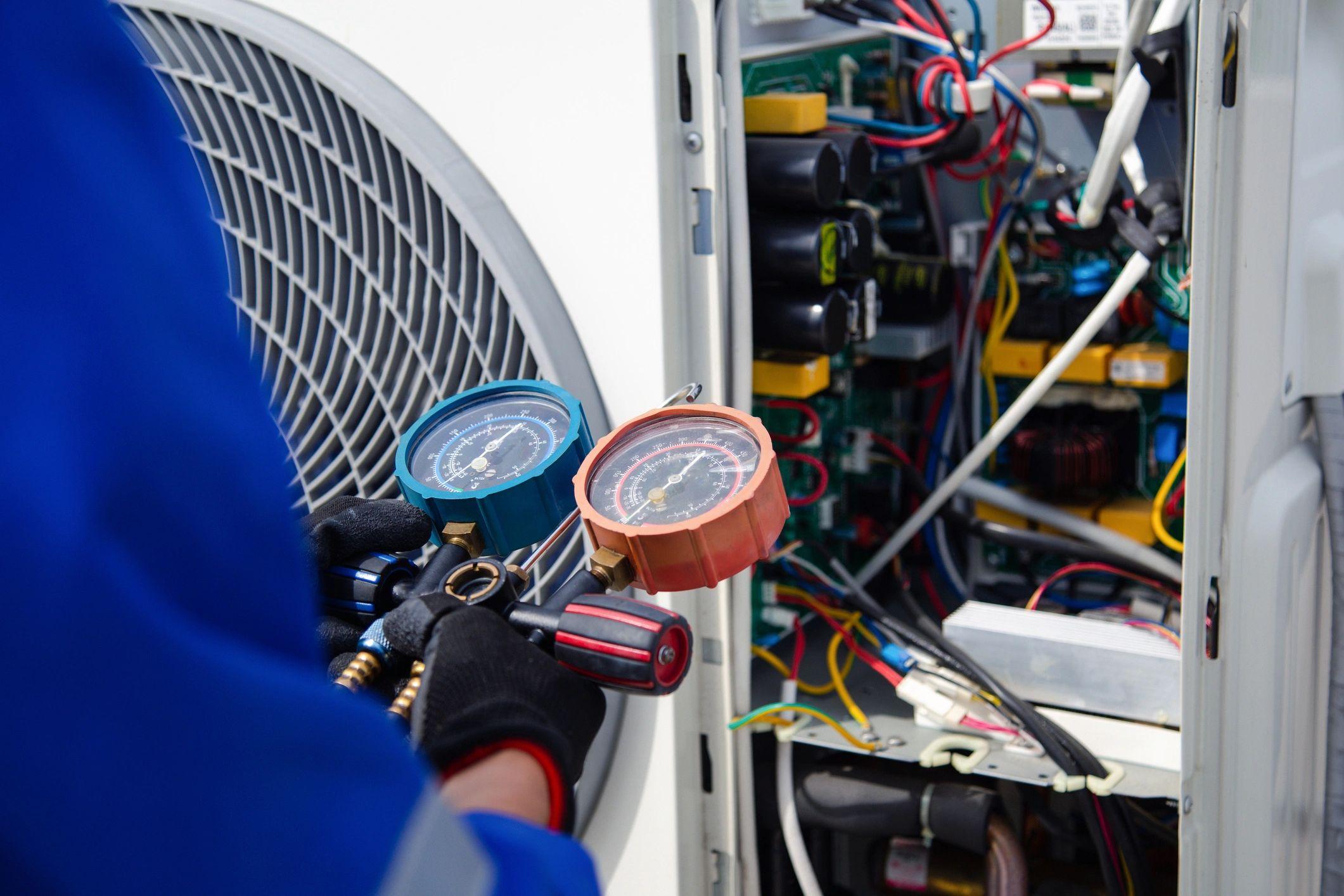
Understanding Phoenix’s Unique AC Challenges
Phoenix’s extreme desert climate creates specific challenges for air conditioning systems that homeowners in other regions rarely face. The Valley of the Sun experiences some of the harshest conditions for HVAC equipment in the entire United States, with systems running nearly continuously from May through October.
The Desert Impact on Your AC System
The combination of extreme heat, dust storms (haboobs), and minimal rainfall puts extraordinary stress on air conditioning components. According to the National Weather Service, Phoenix experiences an average of 110 days above 100°F annually, with the mercury sometimes climbing to 120°F. This relentless heat causes refrigerant pressures to spike, compressors to work overtime, and electrical components to degrade faster than in moderate climates.
Dust accumulation is another significant factor unique to Phoenix. The Arizona Department of Environmental Quality reports that the Phoenix metro area experiences 10-15 major dust events yearly, each depositing layers of fine particulate matter on AC coils and filters. This buildup restricts airflow, reduces efficiency, and forces systems to work harder, ultimately leading to premature component failure.
The extreme temperature differential between indoor and outdoor environmentsoften 40-50 degreescreates additional strain. When it’s 115°F outside and you’re maintaining 72°F inside, your AC system is performing the equivalent of running a marathon every single day. This constant cycling and extreme workload explain why Phoenix air conditioner repair services stay busy year-round, particularly during the peak summer months.
Common AC Problems in Phoenix Homes
Understanding the most frequent air conditioning issues in Phoenix helps homeowners recognize problems early and communicate effectively with repair technicians. Based on service call data from local HVAC contractors, certain problems occur with predictable regularity in the Valley.
Refrigerant Leaks and Pressure Issues
The extreme heat causes refrigerant lines to expand and contract dramatically, leading to microscopic cracks and pinhole leaks. Industry studies show that Phoenix AC systems experience refrigerant leaks 40% more frequently than the national average. These leaks not only reduce cooling capacity but also damage the compressor if left unaddressed.
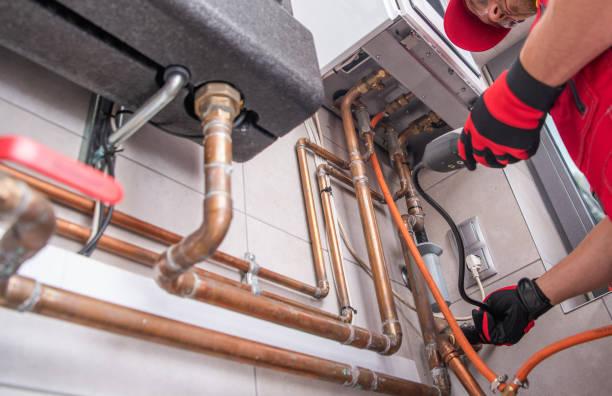
Capacitor Failures
Capacitors, which provide the electrical boost needed to start motors, fail frequently in Phoenix’s heat. The ambient temperature inside outdoor AC units can reach 140°F or higher, well beyond the typical capacitor’s design limits. Local repair companies report replacing an average of 3-5 capacitors daily during summer months, making this one of the most common Phoenix air conditioner repair calls.
Compressor Burnout
Compressors in Phoenix work harder and longer than almost anywhere else in the country. The combination of continuous operation, high head pressures, and inadequate maintenance leads to premature compressor failure. Replacement costs typically range from $1,500 to $3,500, making this one of the most expensive AC repairs homeowners face.
Additional common problems include:
- Clogged condensate drains due to algae growth in humid indoor conditions
- Fan motor failures from bearing wear and overheating
- Thermostat malfunctions from extreme temperature swings
- Electrical component degradation from heat stress
- Frozen evaporator coils despite outdoor heat
Choosing the Best Phoenix Air Conditioner Repair Service
Selecting the right AC repair company in Phoenix requires careful consideration of multiple factors. With hundreds of HVAC contractors serving the Valley, distinguishing between exceptional service providers and those who might leave you sweating requires due diligence.
Essential Qualifications to Verify
Every legitimate Phoenix air conditioner repair company should possess specific credentials. The Arizona Registrar of Contractors requires HVAC contractors to hold either a CR-39 (Air Conditioning and Refrigeration) or CR-3 (General Dual) license. You can verify any contractor’s license status, complaint history, and bond information through the ROC website.
Insurance coverage is equally critical. Reputable companies carry both general liability and workers’ compensation insurance. According to the Better Business Bureau of Arizona, uninsured contractors account for 35% of all HVAC-related complaints in the Phoenix metro area. Always request proof of insurance before allowing any technician onto your property.
Experience with Phoenix-Specific Challenges
Not all AC repair experience is equal. Companies familiar with Phoenix’s unique climate challenges understand the importance of:
- Properly sizing replacement components for extreme heat conditions
- Installing surge protection to guard against monsoon-related power fluctuations
- Recommending desert-appropriate maintenance schedules
- Understanding how altitude (Phoenix sits at 1,086 feet) affects system performance
- Recognizing signs of heat-related component stress before complete failure occurs
Top-Rated Phoenix AC Repair Companies
Based on customer reviews, industry certifications, response times, and service quality, several Phoenix air conditioner repair companies consistently rank among the best. While we operate primarily in Houston through our AC repair services, we recognize excellence in the industry wherever it exists.
What Sets Premium Providers Apart
The best Phoenix AC repair services share several distinguishing characteristics. They offer 24/7 emergency serviceessential when your AC fails at 10 PM on a 105°F night. They employ NATE-certified technicians who undergo continuous training on the latest equipment and repair techniques. They provide transparent, upfront pricing without hidden fees or surprise charges.
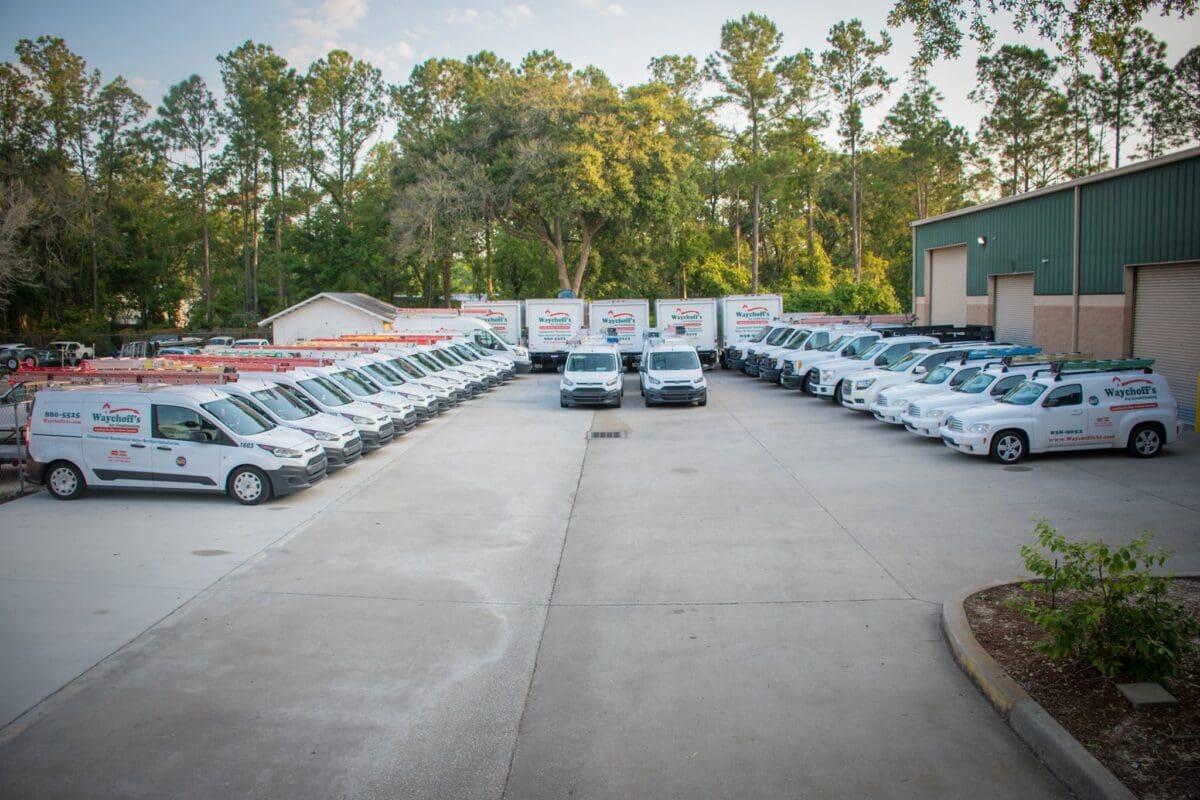
Customer service excellence manifests in multiple ways: promptly returned calls, on-time arrivals, clean and professional appearance, thorough explanations of problems and solutions, and follow-up calls to ensure satisfaction. Companies that excel in these areas generate positive word-of-mouth referrals and maintain strong online reputations.
Cost Factors for Phoenix Air Conditioner Repair
Understanding repair costs helps homeowners budget appropriately and avoid overpaying for services. Phoenix air conditioner repair prices vary based on multiple factors, but certain patterns emerge from market analysis.
Typical Repair Cost Ranges
| Repair Type | Low End | Average | High End |
|---|---|---|---|
| Capacitor Replacement | $150 | $250 | $400 |
| Refrigerant Recharge | $200 | $400 | $650 |
| Fan Motor Replacement | $300 | $500 | $800 |
| Compressor Replacement | $1,500 | $2,200 | $3,500 |
| Evaporator Coil Replacement | $900 | $1,400 | $2,200 |
| Control Board Replacement | $450 | $700 | $1,200 |
Several factors influence where your repair falls within these ranges. Emergency calls during nights, weekends, or holidays typically incur premium charges of 50-100% above standard rates. The age and efficiency rating of your system affects parts availability and cost. Warranty coverage can significantly reduce out-of-pocket expenses, though labor often isn’t covered even when parts are.
Preventive Maintenance: Avoiding Emergency Repairs
The most cost-effective approach to Phoenix air conditioner repair is preventing the need for emergency services through regular maintenance. Desert climate conditions make preventive maintenance even more critical than in moderate climates.
Essential Maintenance Tasks for Phoenix Homes
Monthly filter changes are non-negotiable in Phoenix. The combination of dust, pollen, and continuous system operation clogs filters faster than manufacturer recommendations suggest. High-quality pleated filters with MERV ratings between 8-11 provide optimal filtration without restricting airflow excessively.
Biannual professional maintenanceideally in March before summer heat arrives and October as temperatures moderatekeeps systems running efficiently. Professional maintenance includes checking refrigerant levels, cleaning coils, testing capacitors, lubricating motors, verifying electrical connections, and calibrating thermostats. Similar to our maintenance services in Houston, comprehensive tune-ups extend equipment life and prevent unexpected breakdowns.
Homeowners should also perform visual inspections monthly, looking for:
- Ice formation on refrigerant lines (indicating low refrigerant or airflow issues)
- Unusual noises like grinding, squealing, or banging
- Water pooling around the indoor unit
- Inconsistent cooling between rooms
- Unexpected increases in electricity bills
Energy Efficiency and Repair Decisions
Phoenix homeowners face unique considerations when deciding between repair and replacement. With cooling costs representing up to 70% of summer electricity bills, energy efficiency directly impacts monthly budgets.
When Repair Makes Sense vs. Replacement
The traditional advice suggests replacing systems older than 10-15 years, but Phoenix’s extreme conditions often shorten equipment lifespan. Systems here typically last 12-15 years with excellent maintenance, compared to the 15-20 year national average. The “$5,000 rule” provides a useful guideline: multiply the repair cost by the system’s age in years. If the result exceeds $5,000, replacement likely makes more financial sense.
Energy efficiency improvements in modern systems are substantial. A 15 SEER unit installed today uses approximately 35% less electricity than a 10 SEER unit from 2005. For a typical 2,500 square foot Phoenix home, this translates to annual savings of $600-900 on cooling costs. When facing major repairs on older systems, these savings help justify replacement costs.

Finding Emergency Phoenix Air Conditioner Repair
When your AC fails during a Phoenix heatwave, waiting until Monday morning isn’t an option. Emergency repair services provide critical relief, but choosing the right provider under pressure requires preparation.
Preparing for AC Emergencies
Smart homeowners maintain a list of pre-vetted emergency repair services before crisis strikes. Research companies during comfortable weather, verify credentials, and save contact information in easily accessible locations. Many companies offer maintenance plan members priority emergency servicea valuable benefit when demand peaks during heatwaves.
According to Mike Stevens, a 20-year Phoenix HVAC veteran, “The worst time to choose an AC repair company is when it’s 115°F and you’re desperate. That’s when questionable operators emerge, charging excessive rates for subpar work. Do your homework when you’re thinking clearly, not when you’re overheating.”
Technology and Modern Repair Techniques
Advanced diagnostic tools and repair techniques have revolutionized Phoenix air conditioner repair services. Smart technologies enable faster, more accurate problem identification and resolution.
Digital Diagnostics and Smart Systems
Modern technicians use digital manifolds, thermal imaging cameras, and electronic leak detectors to pinpoint problems precisely. These tools eliminate guesswork, reducing diagnostic time and ensuring accurate repairs. WiFi-enabled thermostats and smart AC systems provide diagnostic data remotely, sometimes allowing technicians to identify problems before arriving on-site.
Predictive maintenance technologies analyze system performance patterns, identifying potential failures before they occur. Some Phoenix repair companies now offer monitoring services that track system health continuously, alerting homeowners and technicians to developing issues. While this technology comes at additional cost, it virtually eliminates emergency breakdowns for participating customers.
Environmental Considerations in AC Repair
Phoenix’s air quality and environmental regulations impact air conditioner repair practices. Understanding these factors helps homeowners make environmentally responsible choices while maintaining comfort.
Refrigerant Regulations and Options
The EPA’s phaseout of R-22 refrigerant affects many Phoenix homes with older AC systems. R-22 prices have increased 500% since 2015, making repairs on older systems increasingly expensive. Modern R-410A systems operate more efficiently and pose less environmental risk, though they require complete system replacement rather than simple retrofitting.
Proper refrigerant handling during repairs is crucial. Certified technicians must recover, recycle, and properly dispose of old refrigerant. Homeowners should verify that their chosen Phoenix air conditioner repair service follows EPA regulations and maintains proper certifications for refrigerant handling.
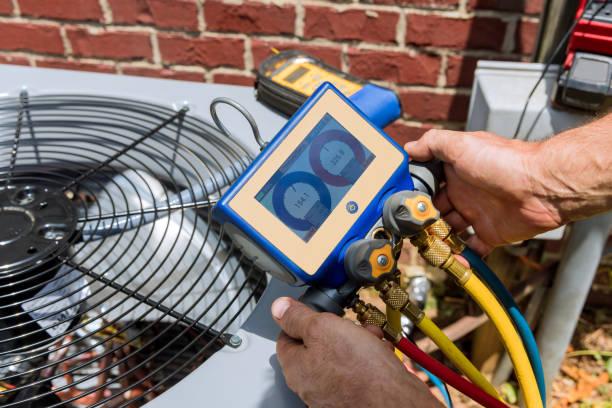
Customer Rights and Repair Warranties
Understanding your rights as a consumer protects against substandard work and ensures recourse if problems arise. Arizona law provides specific protections for homeowners hiring AC repair services.
Warranty Requirements and Protections
Arizona requires licensed contractors to warranty their work for a minimum of two years. This warranty covers both parts and labor for repairs performed, though it doesn’t extend to unrelated system components. Reputable Phoenix air conditioner repair companies often exceed minimum requirements, offering extended warranties on major repairs.
Written estimates are legally required for repairs exceeding $1,000. These estimates must detail parts costs, labor charges, and any additional fees. Contractors cannot exceed quoted prices by more than 20% without customer approval. If disputes arise, the Arizona Registrar of Contractors provides mediation services to resolve conflicts between homeowners and licensed contractors.
Conclusion: Making the Right Choice for Your Phoenix AC Repair Needs
Navigating Phoenix air conditioner repair options doesn’t have to be overwhelming. By understanding the unique challenges our desert climate presents, recognizing common problems, and knowing what to look for in a service provider, you can make informed decisions that keep your home comfortable without breaking the budget.
Remember that the best repair is the one you never need. Regular maintenance, prompt attention to minor issues, and working with qualified professionals prevents most emergency situations. When repairs are necessary, choose licensed, insured, and experienced contractors who understand Phoenix’s specific HVAC challenges.
The extreme Phoenix heat makes air conditioning essential, not optional. Investing in quality repairs and maintenance ensures your system operates efficiently when you need it most. Whether you’re facing an emergency breakdown or planning preventive maintenance, the information in this guide helps you make decisions that protect both your comfort and your wallet.
Don’t wait for an emergency to find reliable AC repair. Research providers now, schedule regular maintenance, and keep your system running efficiently through Phoenix’s challenging climate. For those in other regions facing similar HVAC challenges, companies like 75 Degree AC provide the same level of professional service and expertise in their service areas. The key is finding a trusted partner who understands your local climate and delivers consistent, quality service when you need it most.
Frequently Asked Questions
How quickly can I expect emergency AC repair service in Phoenix?
Most reputable Phoenix air conditioner repair companies offering emergency service can arrive within 2-4 hours during peak season and often within an hour during slower periods. However, during extreme heatwaves when demand surges, wait times may extend to 24-48 hours for non-maintenance plan customers. Companies typically prioritize elderly residents, families with young children, and customers with medical conditions requiring climate control.
What’s the average lifespan of an AC unit in Phoenix compared to other cities?
AC units in Phoenix typically last 12-15 years with proper maintenance, compared to 15-20 years in moderate climates. The constant operation during summer monthssystems run 12-16 hours daily from May through Octobercombined with extreme temperature stress accelerates wear. However, well-maintained systems with annual tune-ups and prompt repairs can reach 18-20 years even in Phoenix’s harsh conditions.
Should I repair or replace my AC if it uses R-22 refrigerant?
If your R-22 system needs major repairs exceeding $1,500, replacement usually makes more financial sense. R-22 costs $150-200 per pound compared to $30-50 for R-410A, and availability continues declining. New systems offer 30-50% better efficiency, offsetting replacement costs through energy savings within 5-7 years. Minor repairs under $500 might justify keeping the system temporarily while planning for replacement.
What certifications should I look for in a Phoenix AC repair technician?
Look for technicians with NATE (North American Technician Excellence) certification, EPA Section 608 certification for refrigerant handling, and Arizona ROC licensing. Manufacturers like Carrier, Lennox, and Trane also offer brand-specific certifications. The best technicians maintain multiple certifications and pursue continuing education annually. Ask about certifications upfrontqualified technicians proudly display their credentials.
How can I reduce AC repair costs during Phoenix summers?
Join a maintenance plan before summer startsmembers typically receive 10-20% repair discounts and priority service. Schedule repairs during morning hours to avoid after-hours charges. Replace filters monthly to prevent strain-related failures. Install a programmable thermostat to reduce system runtime. Consider repairs during spring or fall when demand decreases and companies offer promotional pricing. Most importantly, address minor issues immediately before they become major repairs.

